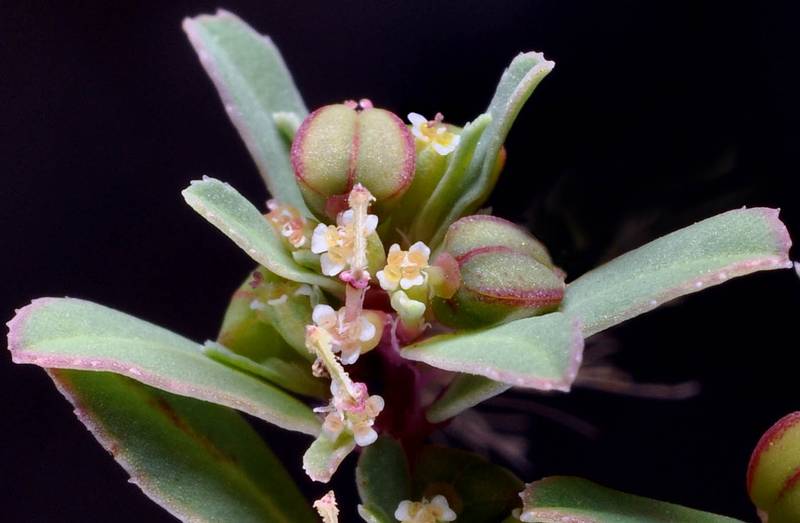Euphorbia polycarpa
Euphorbia glyptosperma
rib seed sandmat, corrugate seeded spurge, ridge seeded spurge
Leaves opposite, obliquely lanceolate to oblong, 5-15 mm. long, entire or with fine, rounded serrations;
stipules mostly linear, 1 mm. long.
Flowers tiny, monoecious, borne in axillary involucres; staminate flowers numerous, naked, each consisting of a single stamen; pistillate flower single and terminal in the involucre;
involucre bearing 4 pinkish glands with whitish appendages, a fifth gland represented by a short, fringed lobe.
Capsules smooth, 1.5 mm. long;
seeds 1.2 mm. long, grayish, prismatic, coarsely wrinkled.
Euphorbia polycarpa
Euphorbia glyptosperma
Occurring chiefly east of the Cascades crest in Washington; British Columbia to California, east to across most of North America to the Atlantic Coast.
- Local floras:
BC,
CA,
OR,
WA
- Local Web sites:
CalFlora,
CalPhotos,
Flora NW,
PNW Herbaria
WildflowerSearch
iNaturalist (observations)
USDA Plants Database
- LBJ Wildflower Center
- SEINet
- Plants of the World Online
- Encyclopedia of Life
- Wikipedia
- Google Image Search


